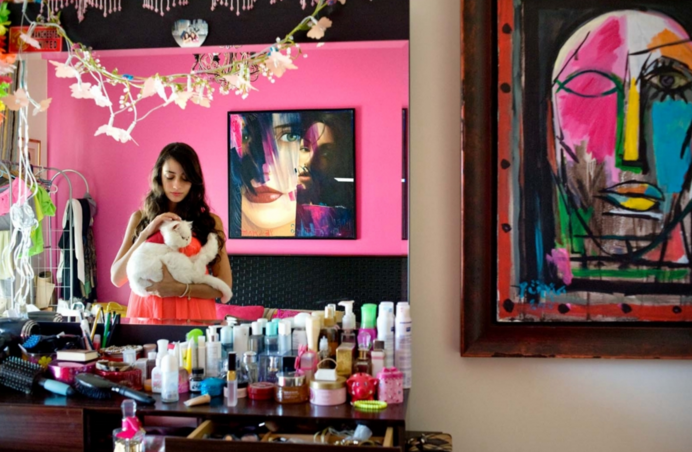ROGER CATLIN
THE WASHINGTON POST
WASHINGTON – Although it was organized by Boston’s Museum of Fine Arts three years ago, the landmark exhibition “She Who Tells a Story” could not be more immediate in its impact.
At a time when fear of international terror is coinciding with election-year condemnations of entire cultures, what could address the divisive issues more directly than Boushra Almutawakel’s portrait of a confident young woman whose hijab is an American flag? Created shortly after 9/11, the work is one of a series in the exhibition, which opens April 8 at the National Museum of Women in the Arts, that deals with the sociological complexity of such headgear in the 21st century.

The exhibition, inspired by the Arabic word “rawiya,” meaning “she who tells a story,” also addresses the balance of everyday life amid conflicts and challenging Western stereotypes. Here’s how it adds up:
12: Number of artists represented in “She Who Tells a Story.”
84: Number of pieces in the show.
13: Number of the most images by any photographer in the exhibition, reached by Shadi Ghadirian and Newsha Tavakolian, both of Iran. Tavakolian also is represented by a six-screen video from her “Listen” series.
6: Number of imaginary CD covers devised for singers prohibited from recording albums in Iran because they are women, from Tavakolian’s “Listen” series.
15: Number of years after the 1979 Iranian Revolution when artist Shirin Neshat revisited her native country, producing work incorporating elements of the veil, gun, text and gaze.
14: Number of years that have passed since the West Bank incursions depicted in Rula Halawani’s series “Negative Incursions,” which look like printed negatives or the view from soldiers’ night-vision goggles.

9: Number of images in Boushra Almutawakel’s “Mother, Daughter, Doll” series, showing the artist, her oldest daughter and the daughter’s doll wearing a progression of veils such that in the last image, they are completely obscured.
18: Number of days in the Egypt uprising of January 2011, whose news photographs of Tahrir Square and its brutal aftermath are rendered by Nermine Hammam into colorful postcards and Japanese screens.
60,000: Approximate number of verses in “The Shahnameh,” the 1,000-year-old epic Persian poem that inspired Neshat’s “The Book of Kings,” a series of works depicting Arab Spring protesters.
150: Length, in inches, of the largest work in the exhibition – Lalla Essaydi’s triptych “Bullets Revisited #3,” in which the gold-colored embellishments surrounding reclining women are actually bullet casings.

10: Number of women depicted riding in a motorboat on the Mediterranean in non-restricted areas near Israel during a class trip, in a work from Tanya Habjouqa’s “Women of Gaza” series.
3: Other museums where “She Who Tells a Story” has been on view: The Museum of Fine Arts in Boston, the Cantor Arts Center at Stanford University and the Carnegie Museum of Art in Pittsburgh.
16: Number of weeks “She Who Tells a Story” will be at the National Museum of Women in the Arts.










